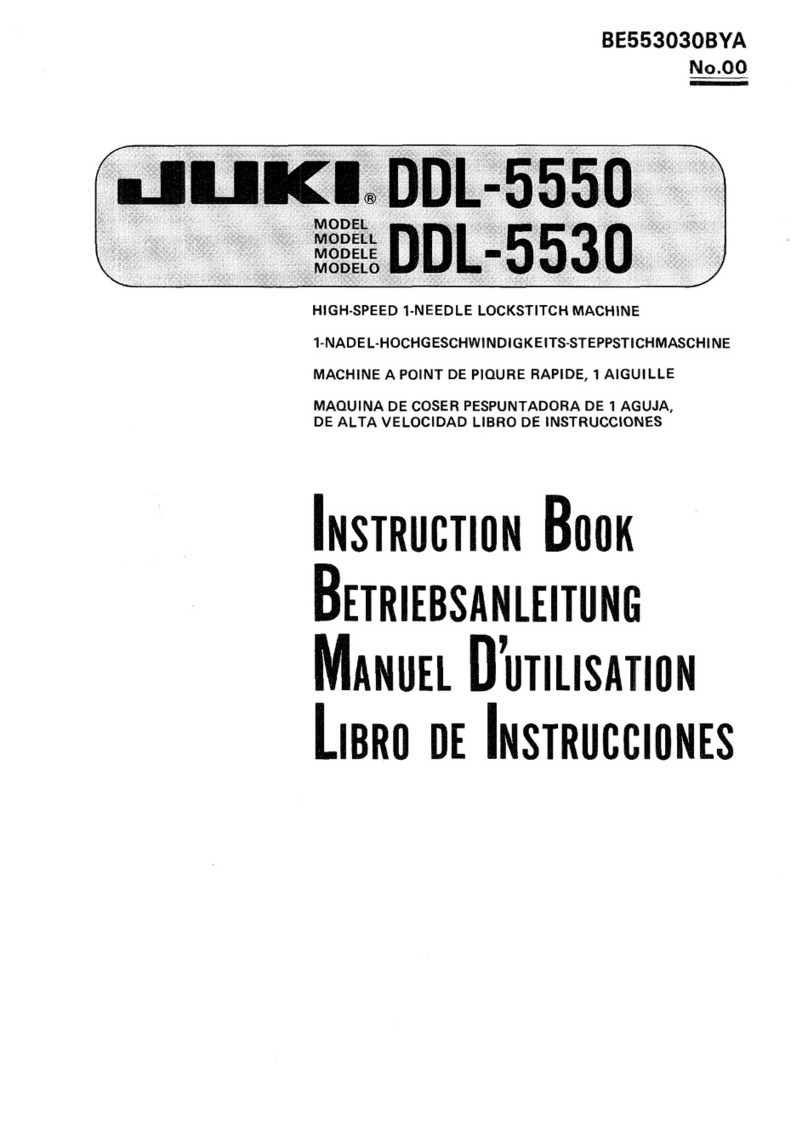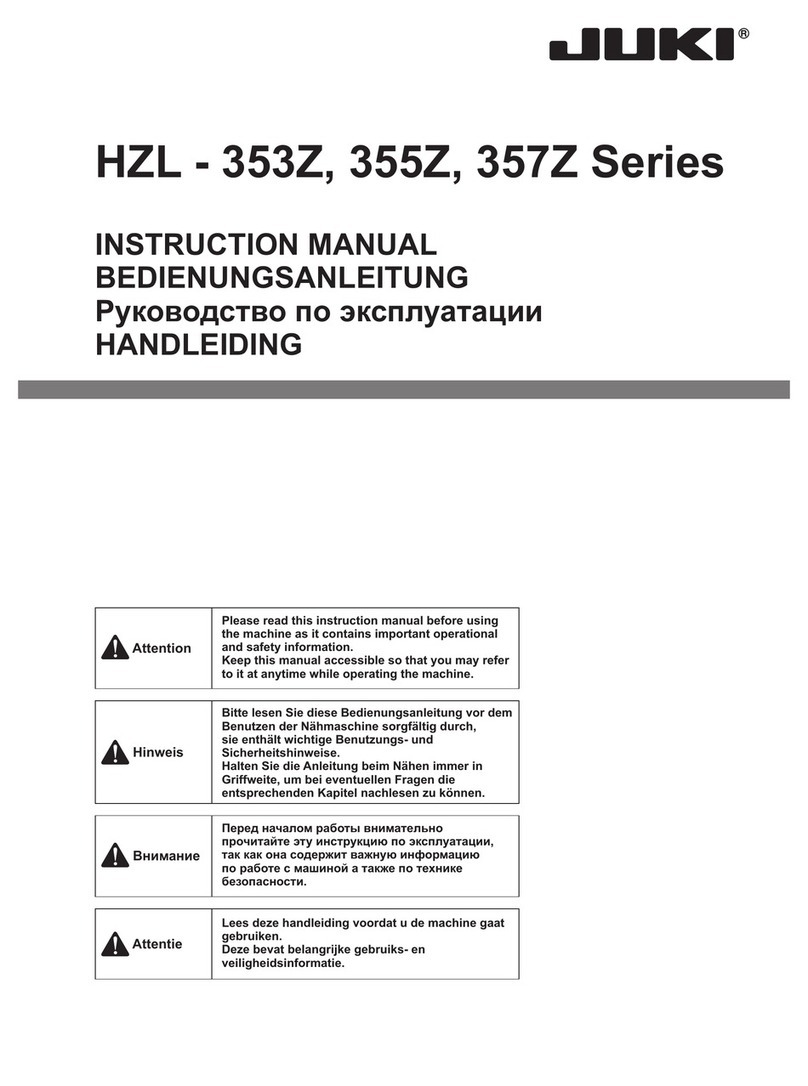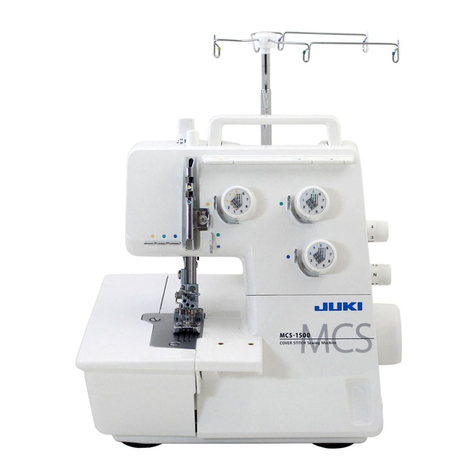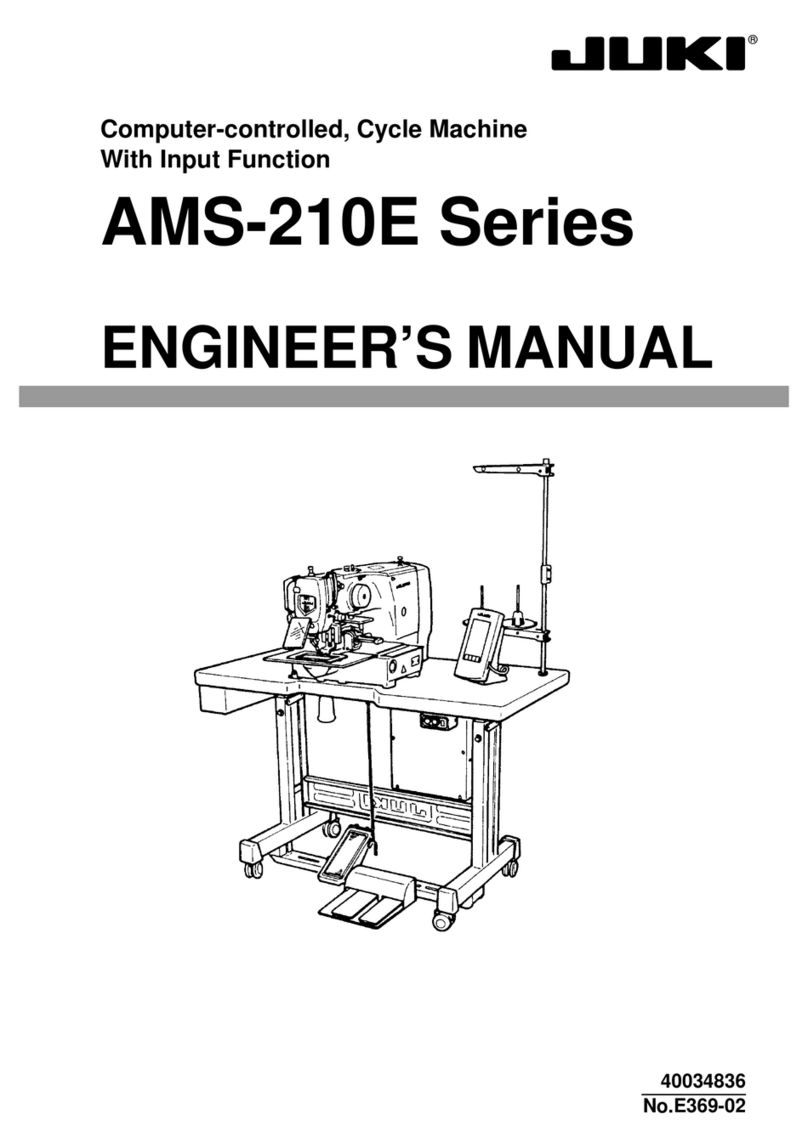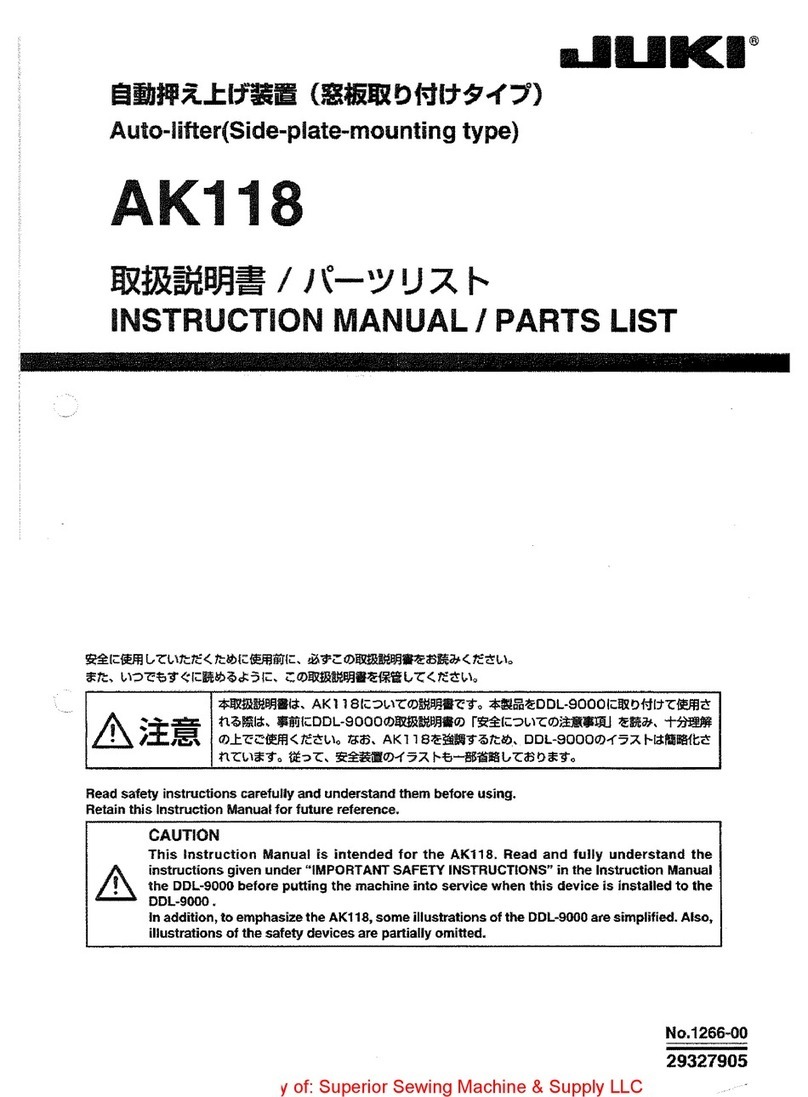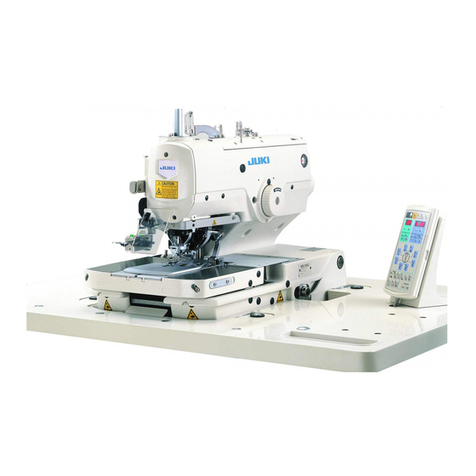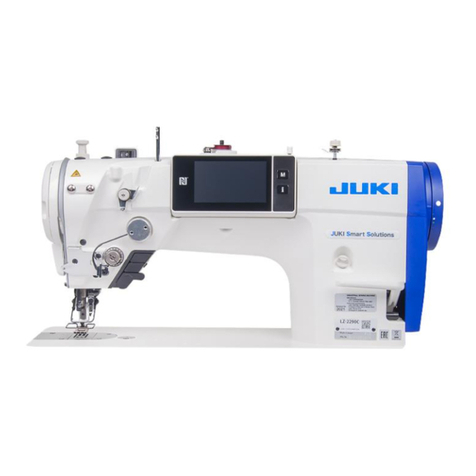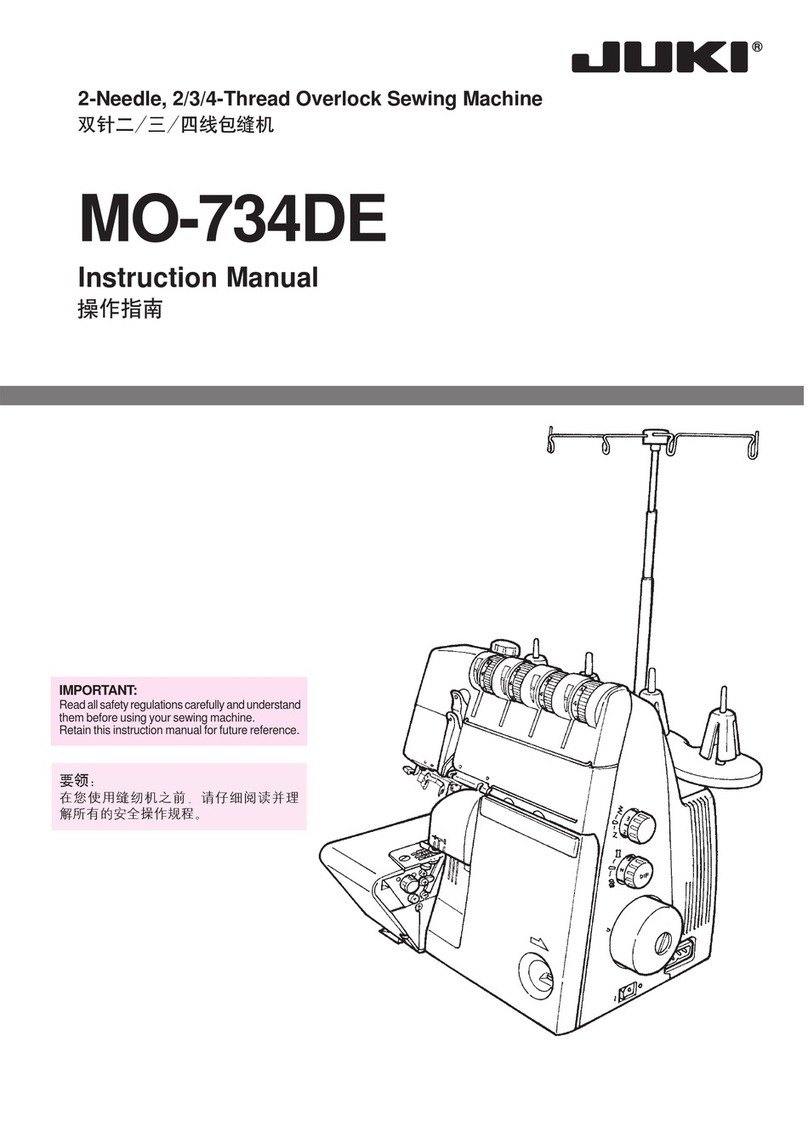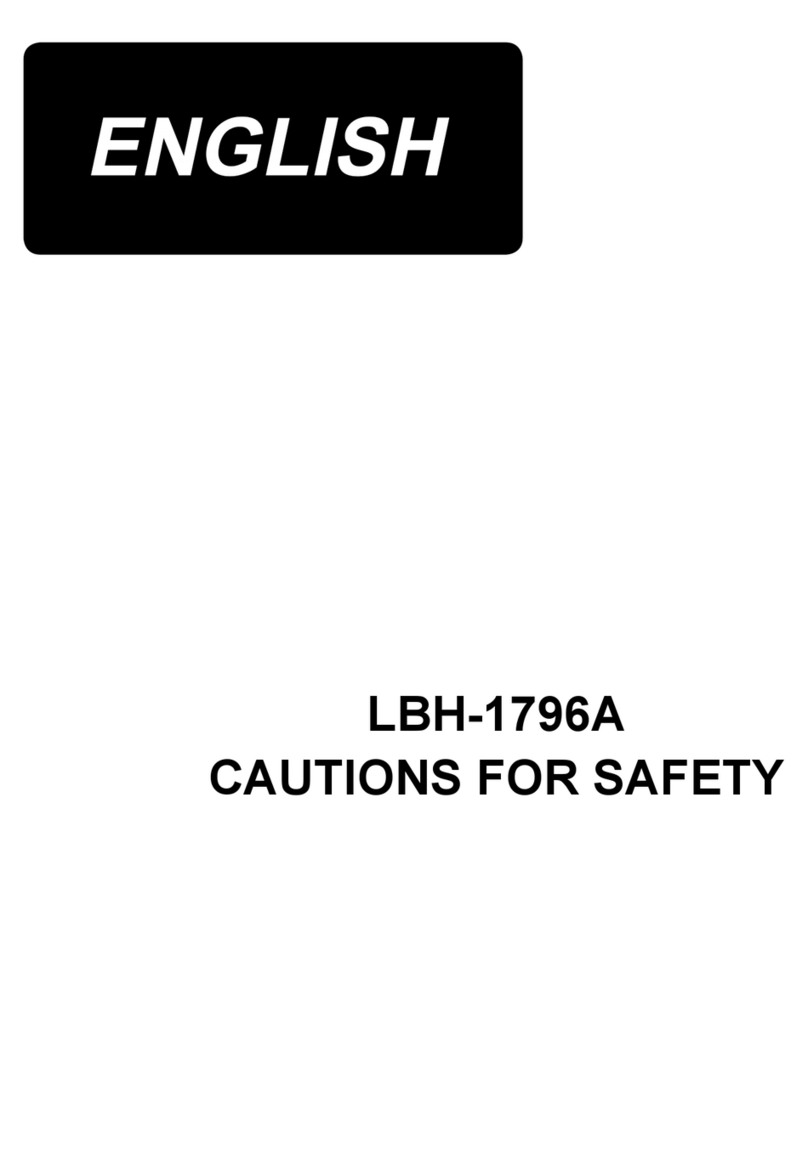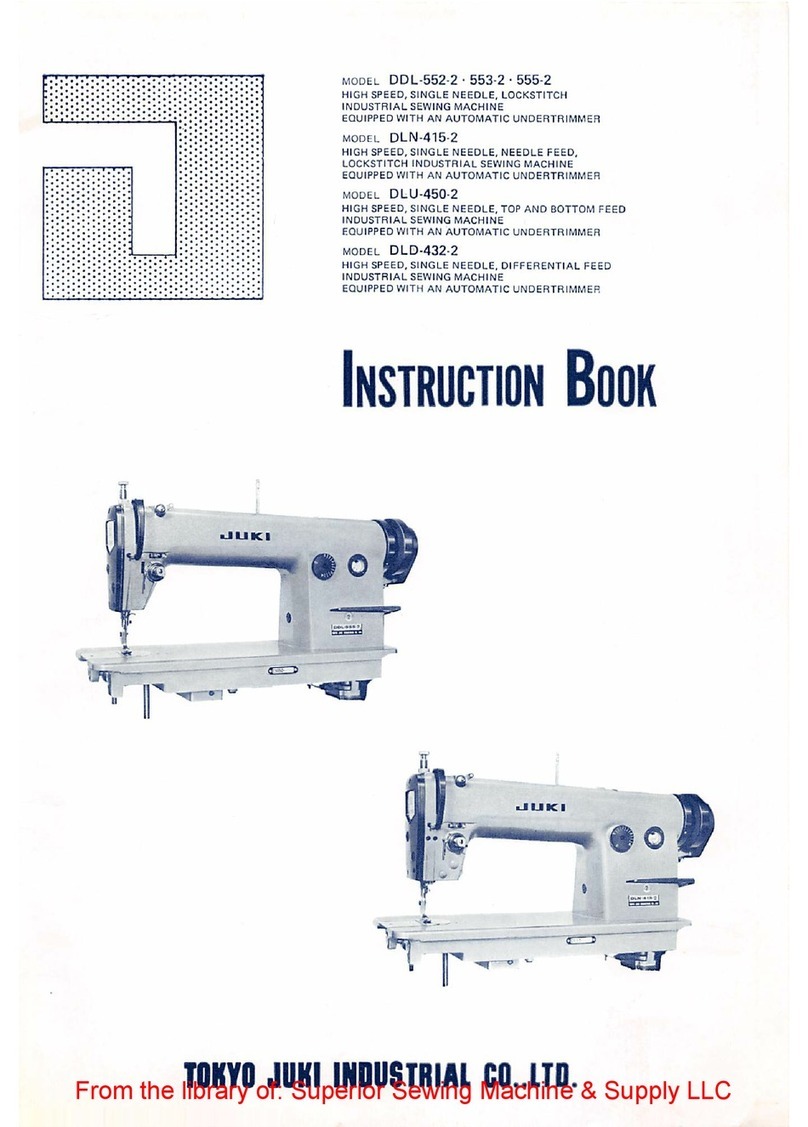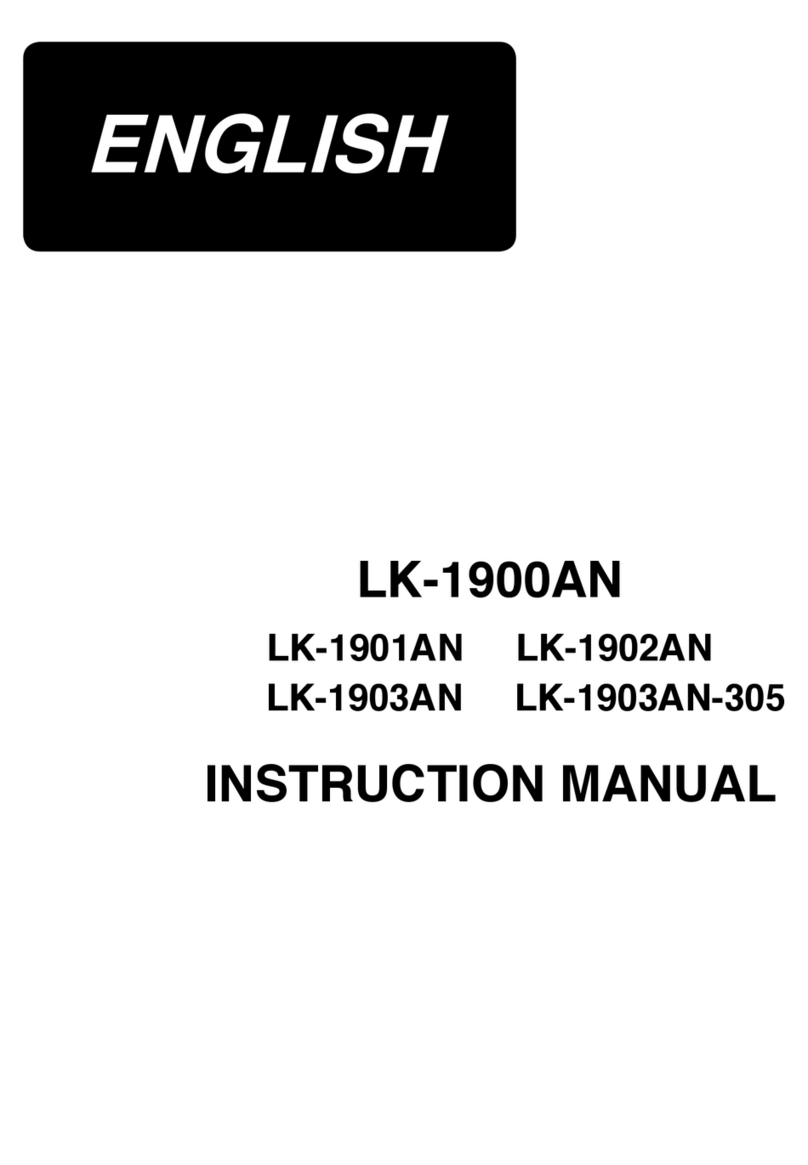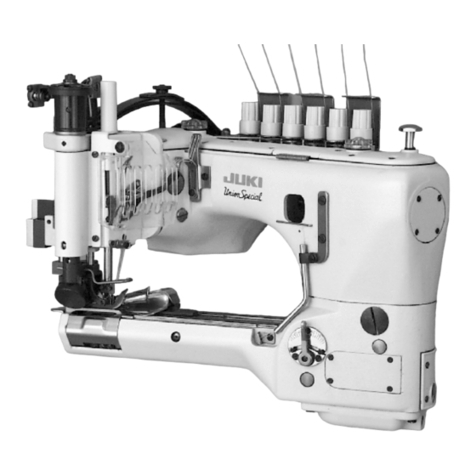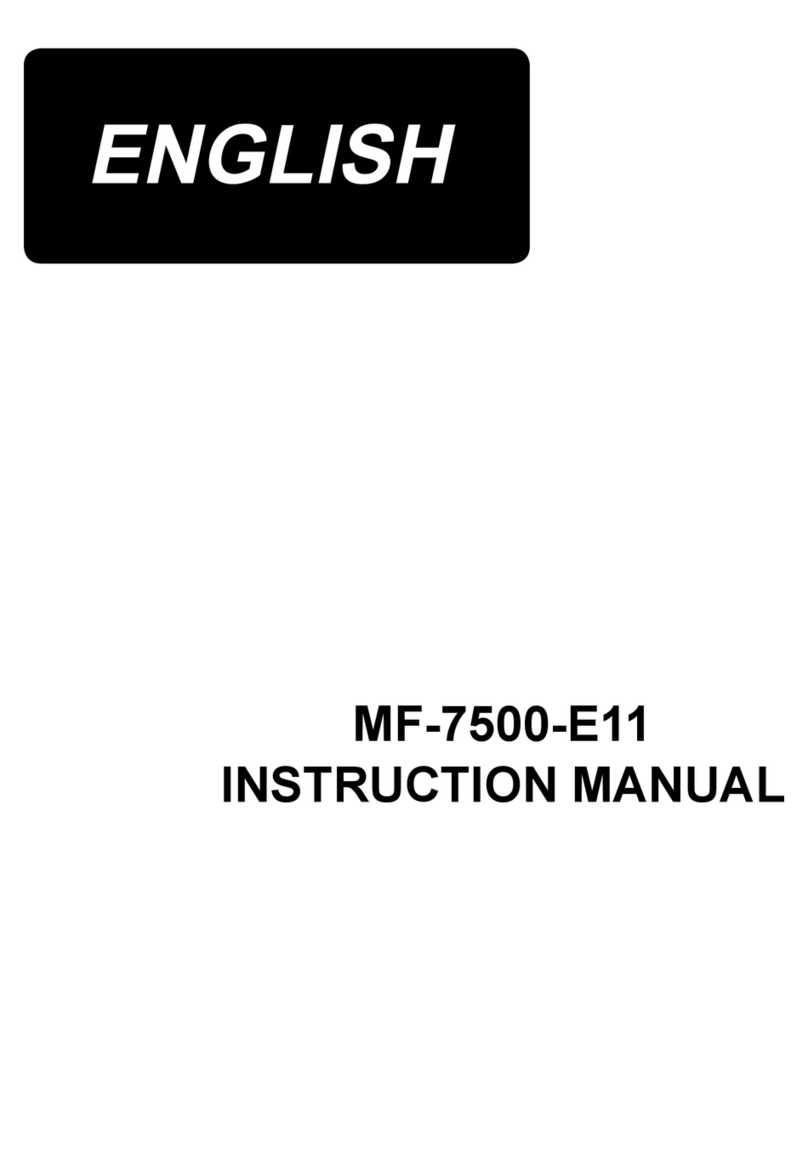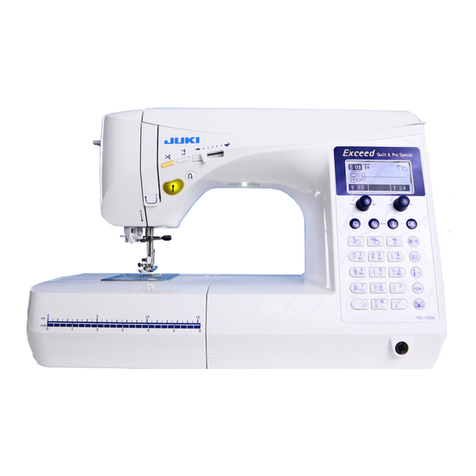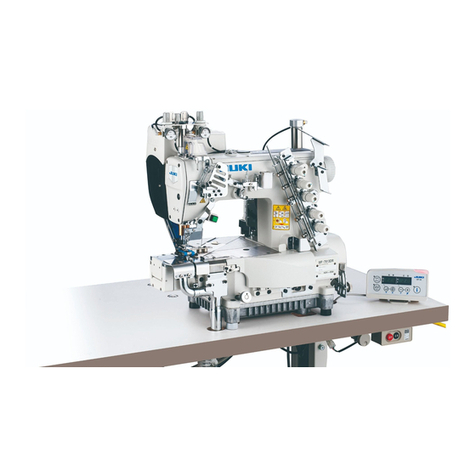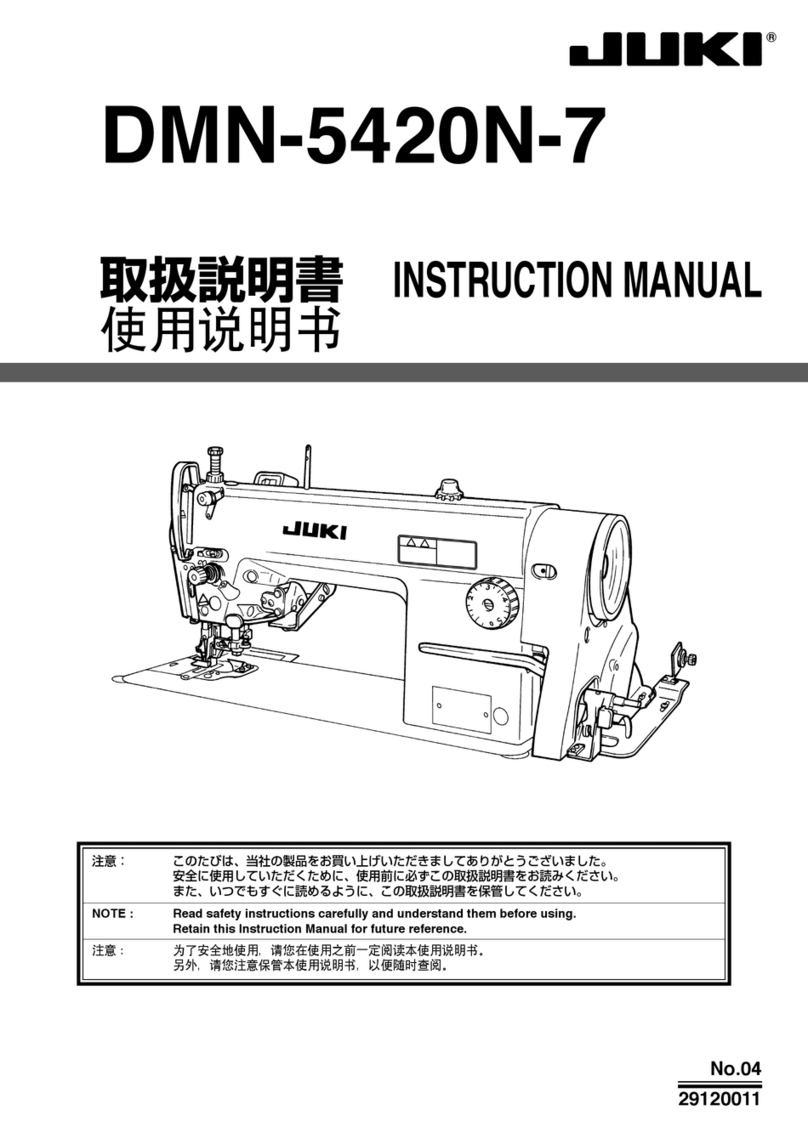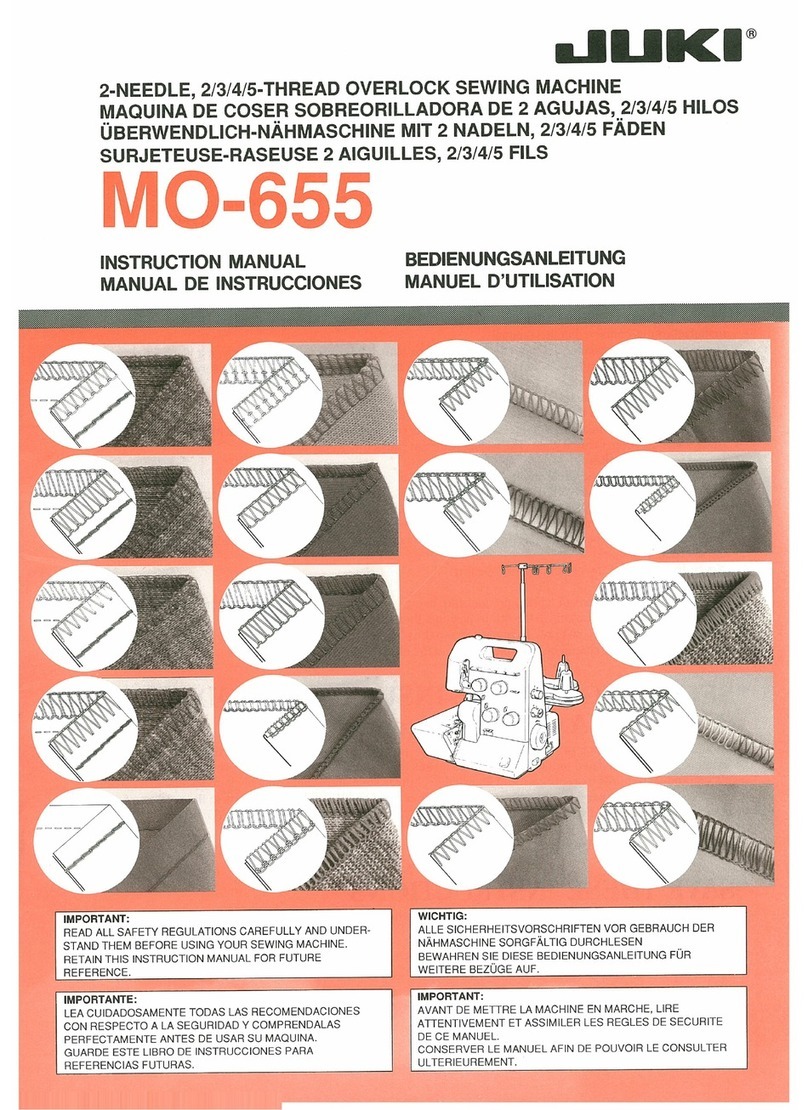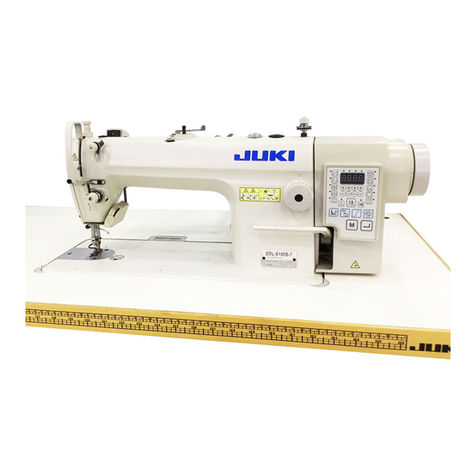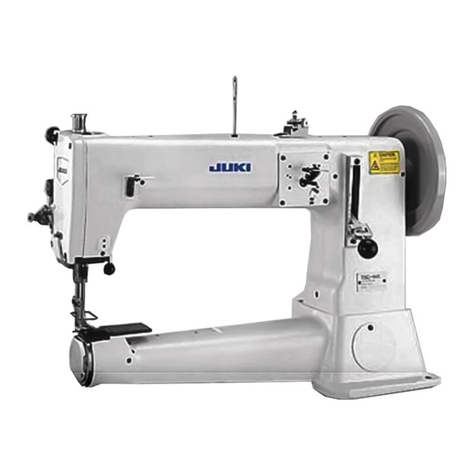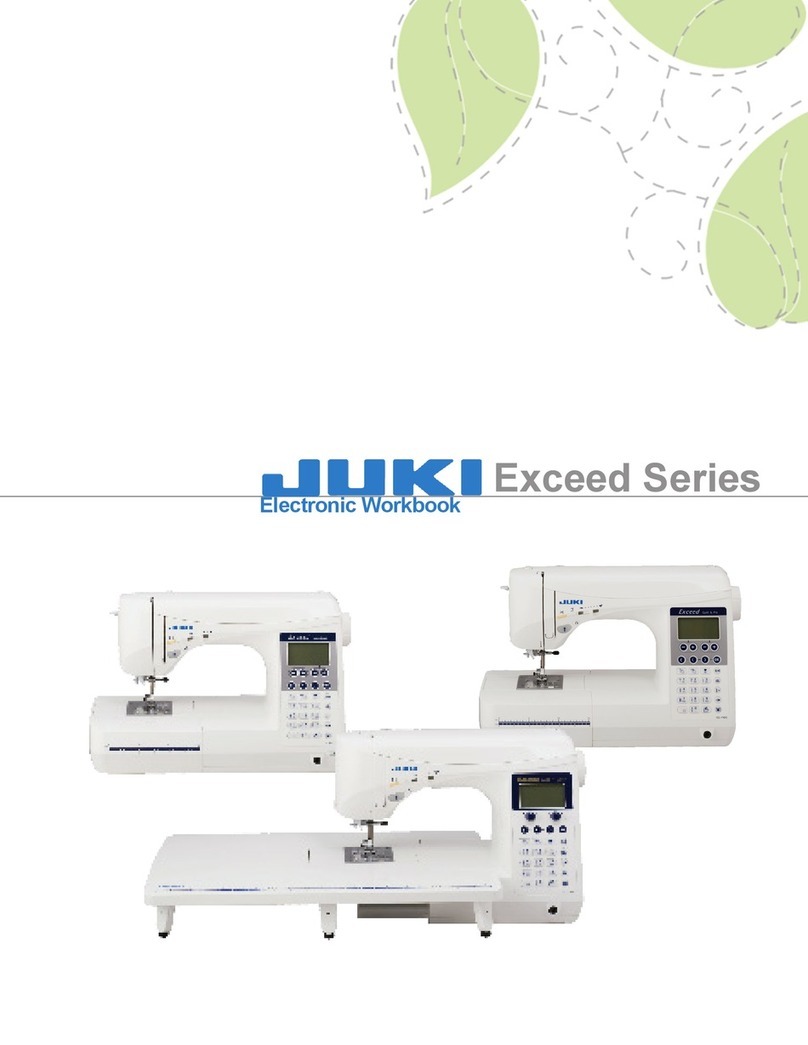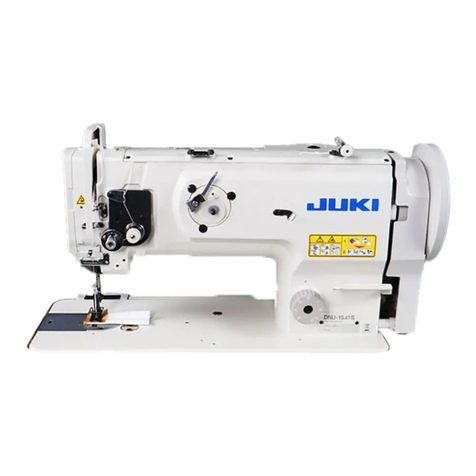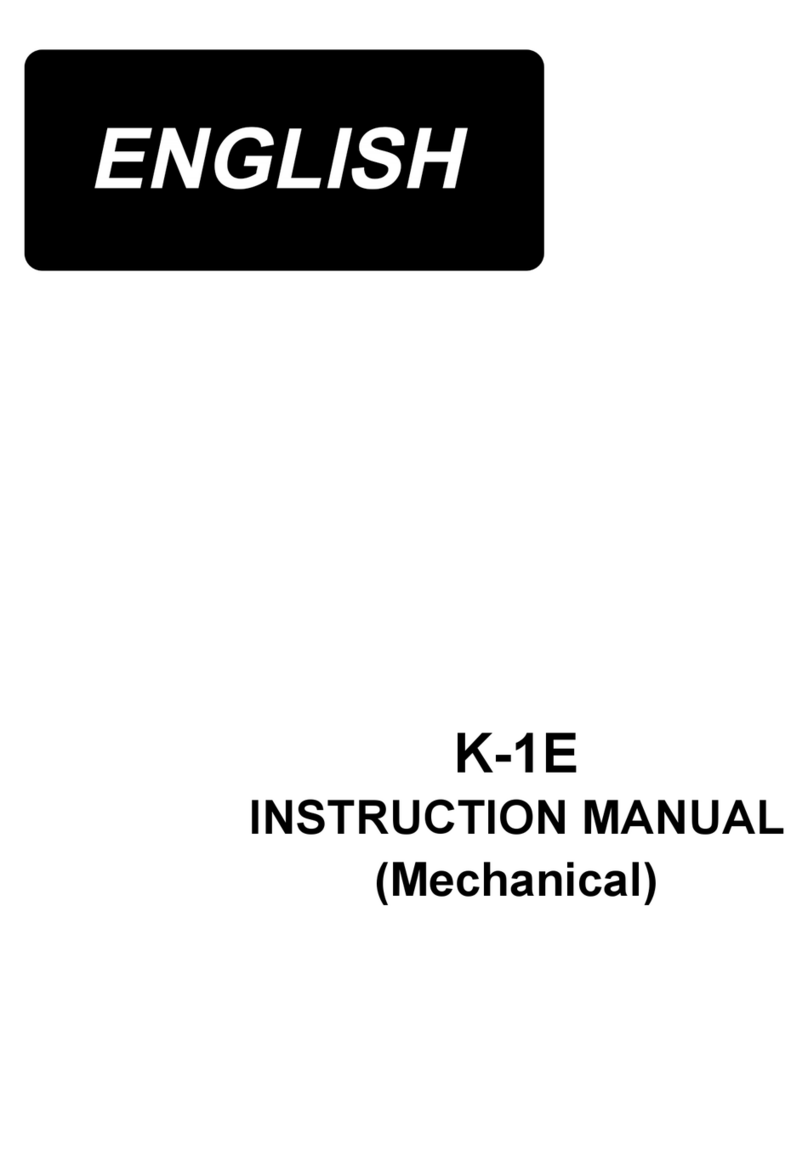
v
ENGLISH
Precautions to be taken so as to use the AMS-210ENHL2210/TF10S more safely
1. In case nothing is displayed in the operation panel even when the power switch is turned ON,
turn OFF the power switch and check the power voltage and phase.
2. In order to protect against personal injury, never place your fingers inside the thread take-up lever,
work clamp, work clamp mechanical section and thread take-up lever cover and near the under-
side of the thread trimmer and needle when turning ON the power switch and while the sewing
machine is in operation.
3. To protect against possible accidents due to abrupt startup of the machine, turn OFF the power
switch before tilting the machine head or removing the motor cover.
4. So as to prevent possible accidents caused by abrupt start of the sewing machine, depress
the start switch after ascertaining that there is no interfering thing under the needle when
winding the bobbin thread. In addition, do not allow hair to be close to the bobbin winder
while it is in operation.
5. Feeding frame automatically comes down when pattern is changed, ready key is ON, Presser
switch is ON, intermediate presser button is ON and bobbin winder button is ON. To prevent
possible accidents caused by abrupt start of the sewing machine, never place your fingers
under the feeding frame.
6. To avoid personal injury, never bring your fingers, hair or clothing close to V belt, cloth cut-
ting knife or motor during operation, and never place anything on any of these parts.
7. To avoid personal injury, never operate the machine with the motor cover, eye protection cov-
er, or any other safety devices removed.
8.
To prevent personal injury or death, do not operate the sewing machine with its covers removed.
9.
The operation panel displays safety warnings. It is necessary therefore to first verify normal
display on the panel when the power switch is turned on, before operating the sewing machine.
10. To prevent personal injury or death, do not press the hand pulley while the sewing machine
is in operation.
11. To avoid personal injury, be careful never to allow your fingers to go inside the machine
when tilting or raising the machine head.
12. To prevent possible accidents due to electric shocks or damaged electrical component(s),
always turn OFF the power switch before connecting or disconnecting the power plug.
13. During thunder and lightning storms, stop your work and disconnect the power from the out-
let to ensure safety and prevent possible accidents due to damaged electrical component(s).
14. If the machine is suddenly moved from a cold place to a warm place, dew condensation may
result. If this occurs, be sure to confirm that there are no potentially dangerous water drops
in the machine before turning it on in order to prevent possible accidents due to damaged
electrical component(s).
15. In the event of a power failure, be sure to turn OFF the power to the machine to protect
against damaged electrical components.
16. This sewing machine should be used under industrial environment. Under general household
environment, the machine may cause poor reception when used in proximity of the television
set or radio.
17. When the sewing machine is used without a break for many hours, the temperature of a part of the
machine body or the rear side of operation panel rises higher by 15˚C than the environmental tem-
perature, and you may feel the heat from the part. However, this phenomenon is not abnormal, and
does not affect the components or the like.
18.
Do not lubricate the machine oil to the places other than the oil tank and the hook section.
The grease lubricating system except the hook section is employed for this sewing machine,
and the grease flows out when lubricating the machine oil resulting in worn-out of the com-
ponents.
19. Be careful of handling this product so as not to pour water or oil, shock by dropping, and the
like since this product is a precision instrument.
20. This is a Class A product. In a domestic environment this product may cause radio interference, in
which case the user may be required to make corrective actions.
21. In order to prevent possible accidents due to a ground fault or a dielectric voltage, an appropriate
power plug should be installed by a person who has expertise in electricity. In addition, the power
plug should be connected to the receptacle which is properly grounded without exceptions.
22.
In order to prevent possible accidents due to a ground fault, the earth cable should be properly grounded.
1. To prevent possible accidents due to electric shocks, neither open the cover of motor electri-
cal box nor touch the component(s) inside the electrical box.
2. Make sure of the needle entry after changing the pattern. Should the pattern protrude from
the work clamp check, needle interferes with the work clamp check resulting in the danger
of occurrence of needle breakage or the like. In addition, check that the work clamp check
which has been set corresponds to that which has been installed on the sewing machine.
*
"CompactFlash(TM)" is the registered trademark of SanDisk Corporation, U.S.A.
